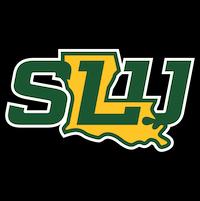How would a Trump presidency affect early childhood care in Southern California?

The economy was front and center for many Americans who went to the polls last week, but President-elect Donald Trump’s campaign had very few specifics about proposals on childcare.
How would a Trump presidency affect early childhood care in Southern California?
California families spent an average of nearly $20,000 on infant care in 2021.
“Child care is so fundamental to the economy and to folks’ ability to get to work,” said Donna Sneeringer, chief strategy officer at the Child Care Resource Center, an organization that helps families with childcare resources in Los Angeles and San Bernardino Counties.
“We will have to wait and see as their priorities are rolled out … clearly there’s a lot of economic need in our country, a lot of families struggling with the cost of living and how they want to approach that,” she said.
So what could early childhood care look like in Southern California under Trump’s second term?
Head Start
While the former president has distanced himself from Project 2025 — a blueprint written by former Trump administration officials — the plan calls for an elimination of Head Start, the federal program that provides early education services for families who make at or below the federal poverty line.
There are more than 51,000 children enrolled in the state’s Head Start program, and another 27,000 children in Early Head Start, which serves children up to age 3.
Nina Buthee, executive director of EveryChild California, said that’s concerning because the programs go beyond providing childcare.
“There’s parent engagement, parent training, nutritional services, oftentimes there’s in-home supportive services, mental health services, and so really it is a wonderful program for those very, very low income families,” she said.
In his 2019 budget, then-president Trump proposed a 25% cut to Head Start programs over 10 years, but Congress rejected the measure and increased funding to the program.
Other subsidized child care programs
Beyond Head Start, California has a number of other subsidized child care programs. California and other states receive federal funding from the Child Care and Development Block Grant Act to fund these programs. In California, these programs are for families who make at or less than 85% of the state median income ($104,544 for a family of four). Families can get subsidized care at home daycares, childcare centers, or pay a family member or a friend to care for their child.
During his first term, Trump proposed cutting the grant program by $95 million, but then signed increases to the program that Congress passed.
California puts a lot of its own state funding in addition to the federal dollars for childcare subsidies, and Sneeringer expects the state to maintain its commitment to early learning and childcare.
Child tax credits
Senator J.D. Vance has expressed interest in increasing the child tax credit from $2000 to $5,000. But he was also a no-show on a bipartisan measure seeking to expand the child tax credit when it failed to pass the Senate earlier this year.
When the child tax credit was temporarily increased during the pandemic, it significantly decreased child poverty.
Paid family leave
In 2019, Trump signed a paid family leave bill that would give federal workers paid time off. And while the U.S. doesn’t have a national paid family leave law, California has its own long-standing program that offers birthing parents up to 19 weeks of paid leave. And in January, the state will be increasing those benefits.
Currently, most workers get 60% of their income replaced through the state’s disability insurance program. That will increase to 90% of income for workers making up to $60,000 a year. Workers who make more than that will go up to 70%.


















